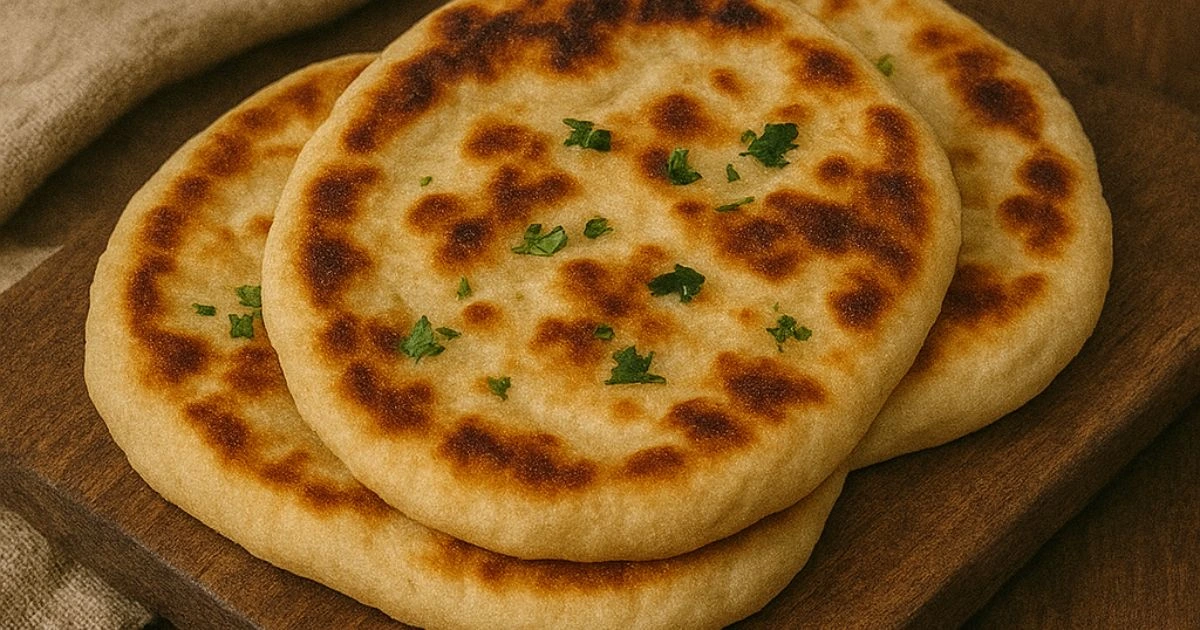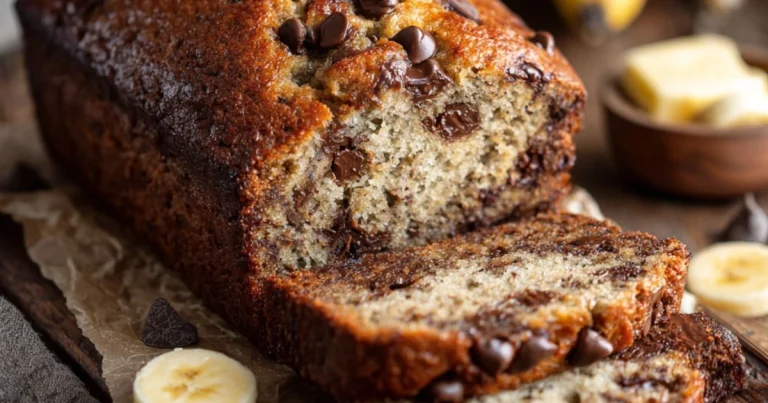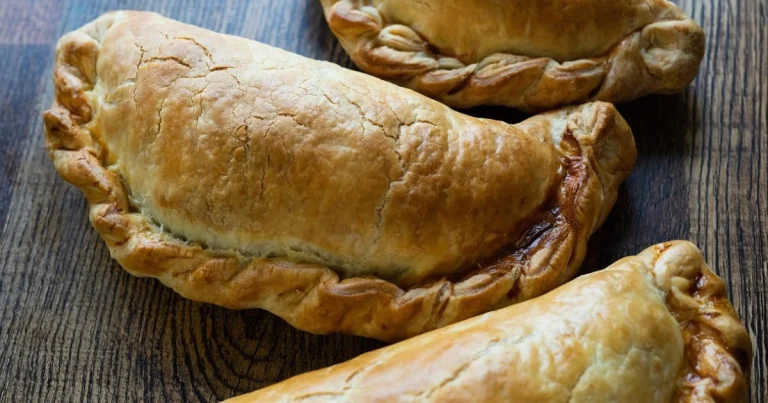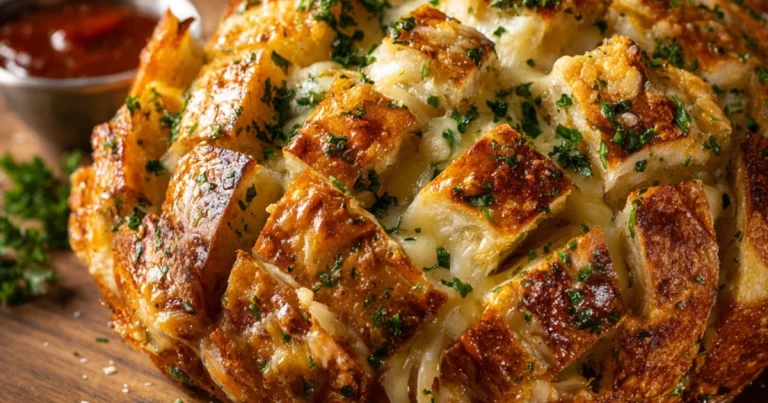Homemade Naan Bread: The Ultimate Guide to Soft, Pillowy Indian Flatbread
Naan bread is a beloved Indian flatbread known for its soft, pillowy texture and slightly charred edges. Whether served alongside flavorful curries or used as a base for wraps and pizzas, homemade naan brings a taste of authentic South Asian cuisine right to your kitchen. This guide will walk you through the history, ingredients, techniques, and variations to help you master this delicious bread at home.
What is Naan Bread?
Naan is a traditional flatbread originating from South Asia, especially India and Pakistan. Unlike regular flatbreads, naan is leavened with yeast or baking powder, giving it a light, airy texture. Traditionally cooked in a tandoor oven, the bread develops a distinctive char and smoky flavor, but you can replicate this perfectly using a cast-iron skillet or oven at home.
History and Origins
The word naan comes from the Persian word “nân,” meaning bread. This flatbread’s history spans centuries, evolving through various cultures and regions. While traditionally baked in clay tandoor ovens, many modern recipes adapt to kitchen-friendly methods. For a deeper dive into its fascinating cultural roots, check out this BBC Good Food traditional naan recipe.
Essential Ingredients for Homemade Naan
To make soft and flavorful naan at home, you’ll need:
- All-purpose flour (or bread flour for extra chewiness)
- Yeast or baking powder (for leavening)
- Plain yogurt (adds moisture and tenderness)
- Warm water (to activate the yeast)
- Sugar (feeds the yeast)
- Salt (for taste)
- Ghee or butter (for brushing after cooking)
For dairy-free or vegan options, you can substitute yogurt with plant-based alternatives like coconut or almond yogurt.
Step-by-Step Guide to Making Naan Bread
Preparing the Dough
- In a large bowl, combine warm water, yeast, and sugar. Let it sit until frothy (about 10 minutes). This activates the yeast.
- Add flour, yogurt, salt, and mix until a rough dough forms.
- Knead on a floured surface for 8-10 minutes until smooth and elastic. Proper kneading develops gluten, essential for the naan’s texture.
First Rise
- Place the dough in a lightly oiled bowl, cover it with a damp cloth, and let it rise for 1-2 hours or until it doubles in size.
Shaping the Naan
- Punch down the dough and divide it into equal portions (about 6-8 balls).
- Roll each ball into a teardrop or oval shape, roughly 1/4 inch thick.
Cooking the Naan
- Heat a cast-iron skillet or heavy-bottom pan over medium-high heat.
- Place the rolled dough onto the skillet and cook for 1-2 minutes until bubbles form and the underside has golden brown spots.
- Flip and cook the other side for another 1-2 minutes.
- Optional: For authentic flavor, you can finish the naan by placing it under the broiler for 30 seconds to char slightly.
After cooking, brush the naan with melted ghee or butter for richness and aroma.
For more detailed cooking techniques, visit this AlphaFoodie garlic naan guide.
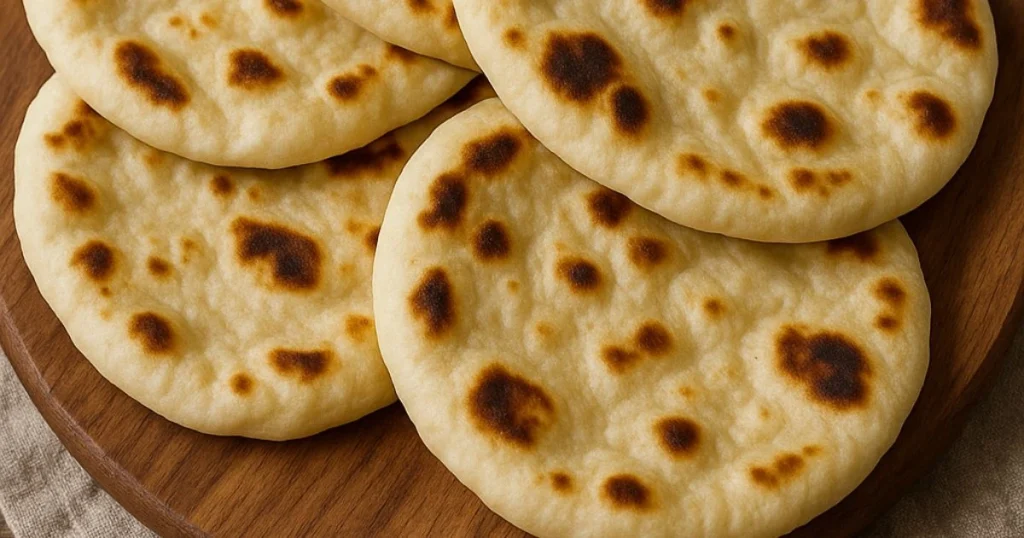
Tips for Perfect Naan Every Time
Making perfect naan bread at home is easier with a few key tips:
- Use warm water (about 110°F) to activate the yeast properly and ensure a good rise.
- Incorporate yogurt into the dough for a tender, soft texture that melts in your mouth.
- Knead the dough well (about 8–10 minutes) to develop gluten, which gives naan its characteristic chewiness.
- Let the dough rise until it doubles in size—this helps create a light and airy bread.
- Cook naan on a hot cast-iron skillet or heavy-bottom pan to get those classic bubbles and slight charring.
- Brush cooked naan with melted ghee or butter for authentic flavor and a shiny finish.
- Avoid over-flouring the surface to keep naan soft and pliable.
Master these tips and enjoy soft, flavorful homemade naan every time!
Flavor Variations of Naan Bread
One of the best things about homemade naan is how versatile it is. Beyond the classic plain version, you can easily customize your naan with different flavor variations that add exciting twists and complement any meal. Here are some popular and delicious ways to elevate your naan bread:
1. Garlic Naan
Garlic naan is a crowd favorite. Simply brush your cooked naan with melted butter or ghee infused with minced garlic and fresh chopped cilantro. This adds a fragrant, savory punch that pairs perfectly with spicy curries. You can find great tips on making garlic naan here.
2. Cheese Naan
For cheese lovers, stuffing naan with gooey mozzarella, paneer, or even a blend of cheeses creates a delightful treat. Stuff the cheese inside the rolled dough before cooking, allowing it to melt into a deliciously soft center.
3. Herbed Naan
Mix fresh herbs like cilantro, mint, or parsley directly into your dough or sprinkle them on top before cooking. This adds freshness and an aromatic layer to your naan, making it an excellent accompaniment to lighter dishes.
4. Peshwari Naan (Sweet Naan)
If you want something sweet, try Peshwari naan filled with a mixture of coconut, raisins, and nuts. It’s a popular dessert-style naan that provides a delightful contrast to savory meals.
5. Spiced Naan
Add ground cumin, coriander, or nigella seeds to the dough or sprinkle them on top for a spiced version with an earthy flavor.
6. Vegan Naan
Replace dairy yogurt with plant-based alternatives like coconut or almond yogurt, and use oil instead of butter or ghee for a vegan-friendly naan that’s just as tasty.
Experimenting with these naan flavor variations not only enhances your meal but also keeps this classic bread exciting every time you make it.
Serving Suggestions
Homemade naan bread is incredibly versatile and can elevate a variety of meals with its soft, pillowy texture and rich flavor. Here are some tasty ways to serve naan that will impress your family and friends:
- With Curries: Naan is a classic companion to Indian dishes like butter chicken, paneer tikka masala, chicken curry, or dal. Use naan to scoop up flavorful sauces for a satisfying meal.
- As a Wrap or Sandwich Base: Fill naan with grilled meats, roasted vegetables, or falafel for quick and delicious wraps. Add fresh greens, yogurt sauce, or chutneys to amp up the flavor.
- Dips and Appetizers: Cut naan into bite-sized pieces and serve alongside dips like raita, hummus, mint chutney, or tahini for easy appetizers or snacks.
- Breakfast Option: Top warm naan with scrambled eggs, avocado, or smoked salmon for a tasty, unconventional breakfast.
- Pizza Base: Use naan as a quick flatbread pizza crust. Add your favorite sauce, cheese, and toppings, then bake until bubbly and golden.
- Cheese or Garlic Naan Side: Serve with melted butter, garlic, or cheese variations to enhance simple meals or enjoy as a snack on its own.
These serving ideas highlight how homemade naan bread can seamlessly fit into any meal, making it a kitchen staple.
Storing and Reheating Naan
To keep your homemade naan bread fresh and delicious, proper storage and reheating are key:
- Storing: Allow naan to cool completely before storing. Place it in an airtight container or resealable plastic bag to prevent drying out. Stored at room temperature, naan stays fresh for up to 2 days. For longer storage, freeze naan by wrapping each piece in foil or parchment paper, then placing them in a freezer-safe bag for up to 1 month.
- Reheating: Reheat naan on a hot skillet or cast-iron pan for 1-2 minutes per side to restore its softness and create a slight crisp on the outside. Avoid microwaving, as it can make naan chewy or rubbery. Alternatively, wrap naan in foil and warm it in a 350°F (175°C) oven for 5-7 minutes.
Proper storage and reheating keep your naan bread tasting fresh and perfect for enjoying anytime.
For more tips on reheating and storage, see this guide from The Guardian on perfect naan.
Frequently Asked Questions (FAQs)
Q: Can I make naan without yeast?
A: Yes! You can use baking powder as a quick leavening agent instead of yeast. This method produces a softer, quicker naan but with less of the classic yeast flavor.
Q: Is yogurt necessary in naan dough?
A: Yogurt adds moisture and tenderness, making the naan soft and flavorful. If you don’t have yogurt, you can substitute with milk or a non-dairy yogurt alternative for a similar effect.
Q: How do I get naan to puff up like in restaurants?
A: High heat is essential. Use a very hot cast-iron skillet or oven to cook the naan quickly. The moisture in the dough creates steam, which causes the bread to puff.
Q: Can I freeze homemade naan?
A: Absolutely! Wrap cooled naan in foil or parchment paper and freeze in an airtight bag for up to one month. Reheat directly from frozen on a skillet or in the oven.
Q: What is the best way to reheat naan?
A: Reheating on a hot skillet or in a 350°F oven helps restore softness and slight crispness. Avoid microwaving to prevent sogginess.
Making homemade naan bread is easier than you think and incredibly rewarding. With this guide, you’ll be able to enjoy soft, fluffy naan anytime you want—perfect for impressing family and friends or simply elevating your weeknight meals.
For more recipes-making tips, checkout Cheesy Pizza Bombs

